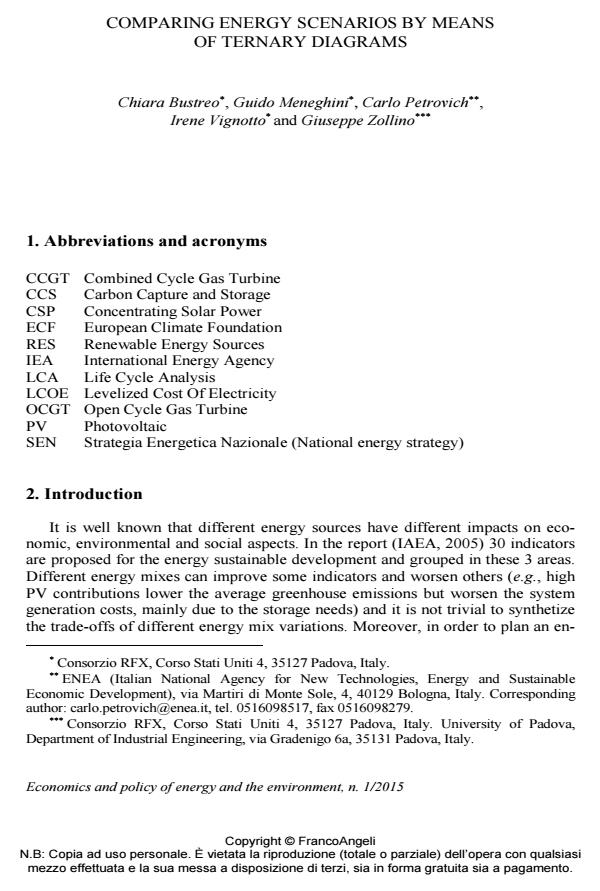Comparing energy scenarios by means of ternary diagrams
Journal title ECONOMICS AND POLICY OF ENERGY AND THE ENVIRONMENT
Author/s Chiara Bustreo, Guido Meneghini, Carlo Petrocvich, Irene Vignotto, Giuseppe Zollino
Publishing Year 2016 Issue 2015/1
Language English Pages 17 P. 71-87 File size 261 KB
DOI 10.3280/EFE2015-001006
DOI is like a bar code for intellectual property: to have more infomation
click here
Below, you can see the article first page
If you want to buy this article in PDF format, you can do it, following the instructions to buy download credits

FrancoAngeli is member of Publishers International Linking Association, Inc (PILA), a not-for-profit association which run the CrossRef service enabling links to and from online scholarly content.
The use of ternary diagrams is here proposed as a straightforward means to show the relation between the electricity generating mixes and relevant scenario parameters, such as system carbon emissions (gCO2/kWh) and generation costs (c€/kWh). The effectiveness of the representation is improved by plotting contour lines inside the diagram to help the reader to identify the generation mixes that meet specific economic and environmental requirements. Along with the description of the potentiality of the ternary diagrams in the energy scenario field, an explanatory application is also reported. It demonstrates the helpfulness of the graph in performing preliminary assessments of specific energy policies. The levelized cost of electricity (LCOE) of a future (2030) Italian electricity generation system largely based on renewables - providing 50% of the demand - is plotted in a ternary diagram as function of the combination of different renewable electricity generation shares. The graph clearly shows that the cheapest electricity can be achieved by an electricity generation mix that covers 20-30% of the electricity demand with wind power, 0-20% with photovoltaic (PV) and 10-30% with the other renewables. Further assessments demonstrate that the PV capacity should be limited so as to reduce the installation of expensive energy storage capacity while wind power along with electricity from biomass could effectively contribute in reducing the system LCOE.
Keywords: Energy scenarios, renewables, Italian energy policy, ternary diagram
Jel codes: O21, Q48
Chiara Bustreo, Guido Meneghini, Carlo Petrocvich, Irene Vignotto, Giuseppe Zollino, Comparing energy scenarios by means of ternary diagrams in "ECONOMICS AND POLICY OF ENERGY AND THE ENVIRONMENT" 1/2015, pp 71-87, DOI: 10.3280/EFE2015-001006